Ruins Of Xunantunich – Mayan City That Once Flourished
A. Sutherland - AncientPages.com - Xunantunich, a major ceremonial center of the Maya Civilization, is an ancient Maya archaeological site atop a ridge above the Mopan River, about 80 miles (130 km) west of Belize City, Cayo District, in western Belize.
"El Castillo" at Xunantunich. Photo credits: Denis Barthel - CC BY-SA 4.0
It comprises six major plazas, surrounded by over twenty-five temples and palaces.
The name 'Xunantunich' derives from the Yucatec Maya language and means 'Stone Woman' (or "Lady of the Rock"). It is a modern name; its ancient name is currently unknown.
Local legend holds that around the end of the 1800s, a man from the village of San Jose Succotz went hunting near the site and suddenly saw a beautiful statuesque Maya maiden standing motionless in the rays of the rising sun near the mouth of a cave, which extended beneath the giant structure.
Stricken by her appearance, the man threw his gun aside and ran downhill to the village. After recounting his tale, several villagers led by the native priest returned to the site.
Arriving at the large mound, they found the mouth of the tunnel, but the stone maiden had disappeared. After that, locals claim that the woman has appeared to several others, but none have been able to follow her into the cavern.
Xunantunich was first explored in the 1800s by Dr. Thomas Gann, a British medical officer who later returned to the ancient place. As records state, he unearthed many Maya treasures, the history of which have been lost and the whereabouts unknown.
The place was occupied perhaps as early as 300 B.C., but most of the Maya architecture there was developed in the late classic period. Later, the inhabitants of Xunantunich continually built new temples and residences over older buildings, enlarging the ceremonial center by raising the platforms and structures in the process.
Xunantunich has a very representative structure known as The Castle (El Castillo), which is the second tallest pre-Columbian building in Belize after the Temple of El Caracol, reaching a height of 40 meters from; it offers from the top an impressive view of the jungle canopy, the other ruins, and even beyond the border.
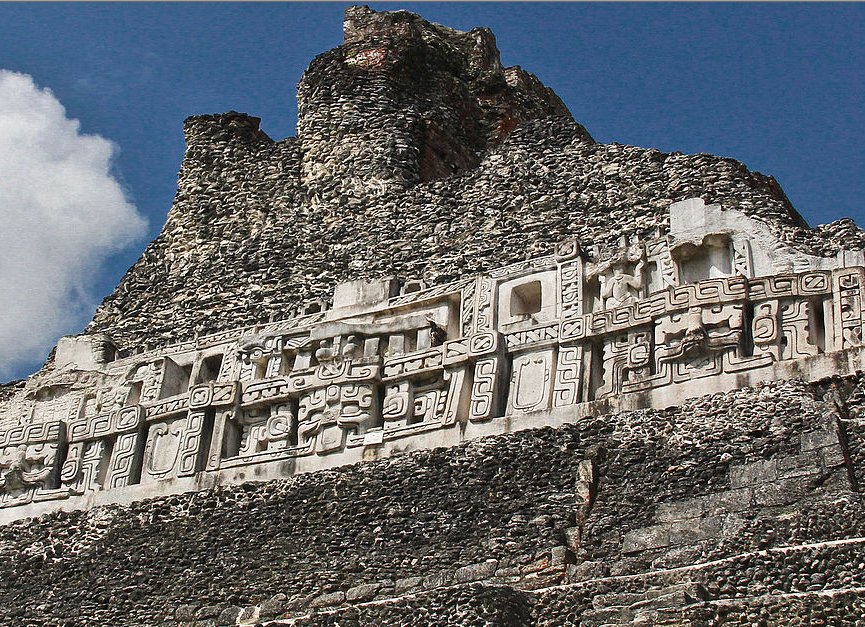 Carvings on the peak of the El Castillo pyramid (Structure A6) at Xunantunich, Belize. Image credit: cjuneau - CC BY 2.0
Carvings on the peak of the El Castillo pyramid (Structure A6) at Xunantunich, Belize. Image credit: cjuneau - CC BY 2.0
The site's name comes from the Yucatec Maya for Stone Woman and is a modern name, like those given to many other archaeological sites in Mesoamerica. Old names still need to be discovered. According to Belizeans, the stone woman refers to a ghost that lives in the archaeological zone. The ghost is all black, and his eyes are lit like fire.
The figure usually appears before the Castle and then ascends the stone steps to disappear into the stone wall. After Xunantunich ceased being a famous ceremonial and civic center, some people continued to occupy its area or perhaps reoccupied it. The excavations of Xunantunich have confirmed that the Maya people lived in the Belize region for centuries.
Later, extensive archaeological work was done in Xunantunich, now an impressive, well-excavated, and easily accessible Mayan site.
Xunantunich was a thriving Mayan city during the Classic Period. The hills were first occupied between 400 BC and 200 BC, and it was in 600 AD that Xunantunich was first used as a ceremonial site, making the entire site some 1400 years old. The site has an ancient ball court where intense pok ta pok ball games were organized, and the loser of the game faced sudden death.
However, the Maya warriors often lost their heads regardless of whether they won. Not far from Xunantunich, there is a mysterious cave that was important for Mayan rituals and human sacrifice.
Interestingly, during a time when most of the Mayan civilizations were crumbling, Xunantunich was managing to expand its city and its power over other areas within the valley. Around 1000 AD, however, Xunantunich was abandoned.
Written by – A. Sutherland - AncientPages.com Senior Staff Writer
Updated on January 14, 2024
Copyright © AncientPages.com All rights reserved. This material may not be published, broadcast, rewritten or redistributed in whole or part without the express written permission of AncientPages.com
Expand for referencesMore From Ancient Pages
-
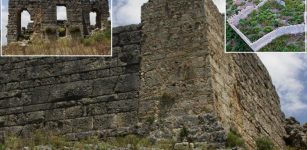 3,000-Year-Old City Of Sillyon That Alexander The Great Failed To Conquer
Archaeology | Aug 31, 2020
3,000-Year-Old City Of Sillyon That Alexander The Great Failed To Conquer
Archaeology | Aug 31, 2020 -
 Amazing 4,500-Year-Old Egyptian Bead-Net Dress Found In Giza Tomb Restored
Featured Stories | Jun 27, 2023
Amazing 4,500-Year-Old Egyptian Bead-Net Dress Found In Giza Tomb Restored
Featured Stories | Jun 27, 2023 -
 Death Of Norse God Balder And Loki’s Mischief That Led To Destruction In Ragnarok
Featured Stories | Nov 15, 2016
Death Of Norse God Balder And Loki’s Mischief That Led To Destruction In Ragnarok
Featured Stories | Nov 15, 2016 -
 Native American Legend Of Apotamkin Teaches Children Obedience
Featured Stories | May 14, 2019
Native American Legend Of Apotamkin Teaches Children Obedience
Featured Stories | May 14, 2019 -
 Controversial Hollow Earth Theory – Questions And Answers – Part 3
Ancient Mysteries | Jun 28, 2019
Controversial Hollow Earth Theory – Questions And Answers – Part 3
Ancient Mysteries | Jun 28, 2019 -
 Disbelief In Human Evolution Is Linked To Prejudice And Racism – Scientists Say
Human Beginnings | Apr 5, 2022
Disbelief In Human Evolution Is Linked To Prejudice And Racism – Scientists Say
Human Beginnings | Apr 5, 2022 -
 Sparta And Legendary King Leonidas: The Heroes Of Thermopylae
Featured Stories | Jul 18, 2018
Sparta And Legendary King Leonidas: The Heroes Of Thermopylae
Featured Stories | Jul 18, 2018 -
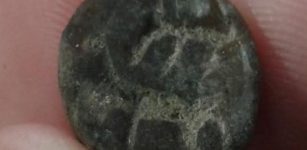 Rare 3,000-Year-Old Seal From The Time Of King David Discovered
Artifacts | Sep 28, 2015
Rare 3,000-Year-Old Seal From The Time Of King David Discovered
Artifacts | Sep 28, 2015 -
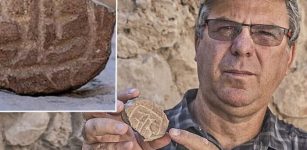 A Seal Impression Dated To Persian Period Discovered In The City Of David
Archaeology | Jul 3, 2020
A Seal Impression Dated To Persian Period Discovered In The City Of David
Archaeology | Jul 3, 2020 -
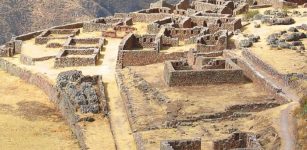 Beautiful Ancient City Of Pisac In The Sacred Valley, Peru – Incredible Inca Ruins
Featured Stories | Jun 22, 2017
Beautiful Ancient City Of Pisac In The Sacred Valley, Peru – Incredible Inca Ruins
Featured Stories | Jun 22, 2017 -
 Magnificent Ancient Treasures Of The Mysterious Kangju Kingdom Found By Archaeologists
Archaeology | Jun 11, 2024
Magnificent Ancient Treasures Of The Mysterious Kangju Kingdom Found By Archaeologists
Archaeology | Jun 11, 2024 -
 Millennia Old Extremely Complex Object Of Unknown Origin
Ancient Technology | Jul 8, 2020
Millennia Old Extremely Complex Object Of Unknown Origin
Ancient Technology | Jul 8, 2020 -
 Hacksilber Hoard Dated To 11th Century BC: Eastern Mediterranean Silver Trade Reconstructed
Archaeology | Jul 5, 2021
Hacksilber Hoard Dated To 11th Century BC: Eastern Mediterranean Silver Trade Reconstructed
Archaeology | Jul 5, 2021 -
 Mysterious Time Slips Near An Ancient Church – Reported
Featured Stories | Oct 23, 2018
Mysterious Time Slips Near An Ancient Church – Reported
Featured Stories | Oct 23, 2018 -
 Controversial Prehistoric Structures That Resisted Water And Extreme Weather Conditions
Ancient Mysteries | Jun 27, 2018
Controversial Prehistoric Structures That Resisted Water And Extreme Weather Conditions
Ancient Mysteries | Jun 27, 2018 -
 On This Day In History: Bolsheviks Executed Aleksandr Kolchak, A Navy Officer And Explorer Of The Arctic – On Feb 7, 1920
News | Feb 7, 2017
On This Day In History: Bolsheviks Executed Aleksandr Kolchak, A Navy Officer And Explorer Of The Arctic – On Feb 7, 1920
News | Feb 7, 2017 -
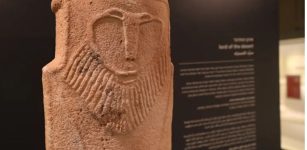 Never-Before-Seen Ancient Statue Of The ‘Lord Of The Desert’ Revealed To The Public – But Who Was He?
Artifacts | Mar 19, 2022
Never-Before-Seen Ancient Statue Of The ‘Lord Of The Desert’ Revealed To The Public – But Who Was He?
Artifacts | Mar 19, 2022 -
 On This Day In History: George Bernard Shaw Died – On Nov 2, 1950
News | Nov 2, 2016
On This Day In History: George Bernard Shaw Died – On Nov 2, 1950
News | Nov 2, 2016 -
 Civita di Bagnoregio – Magnificent 2,500-Year-Old Etruscan City In The Sky Is Struggling To Survive
Featured Stories | Jun 23, 2021
Civita di Bagnoregio – Magnificent 2,500-Year-Old Etruscan City In The Sky Is Struggling To Survive
Featured Stories | Jun 23, 2021 -
 Puzzling Connection Between Native Americans And Lost Northern European Race Could Re-Write History
Ancient Mysteries | Apr 14, 2018
Puzzling Connection Between Native Americans And Lost Northern European Race Could Re-Write History
Ancient Mysteries | Apr 14, 2018

